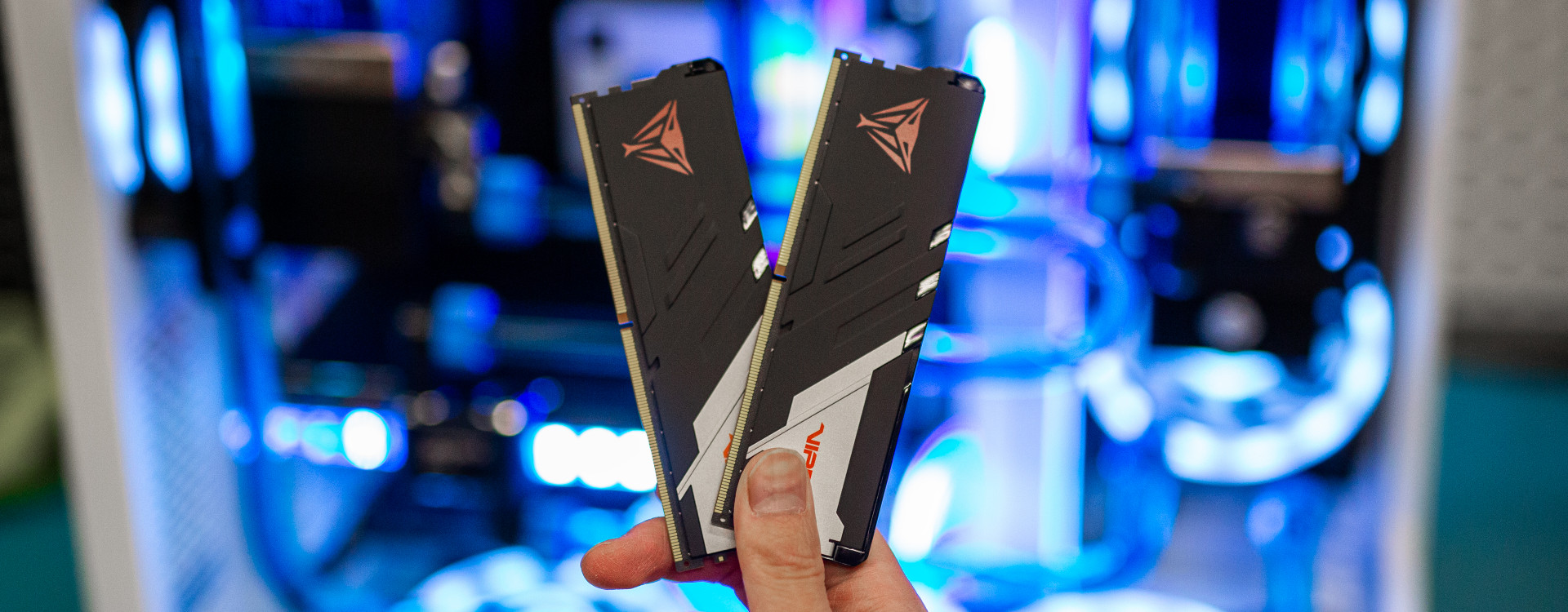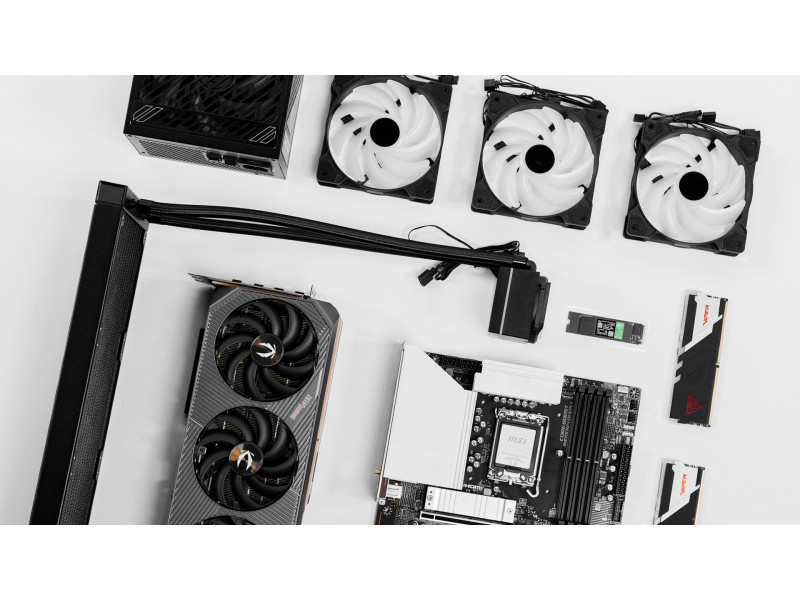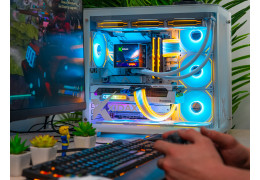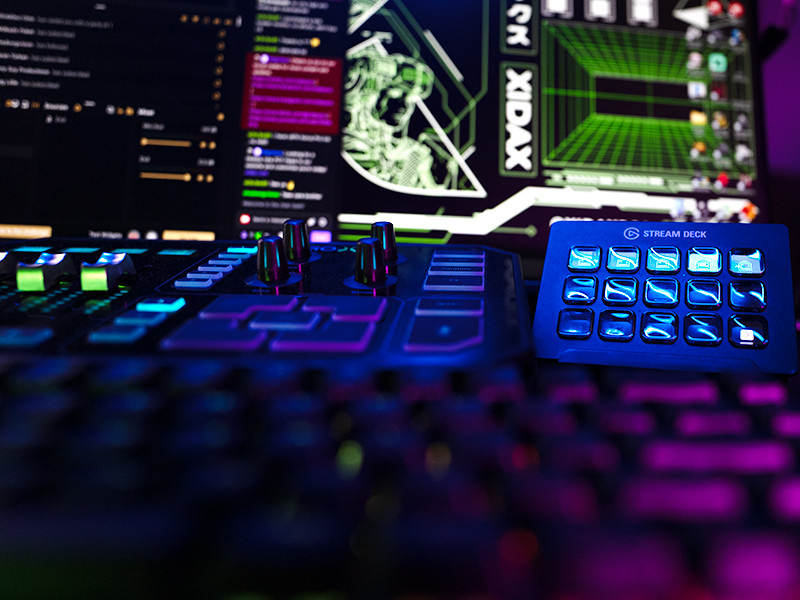
How to Upgrade My Gaming PC: Improve Performance by Applying these Computer Upgrades
Let’s be real: nothing kills your gaming buzz faster than stuttering frame rates, endless loading screens, or that whirrr of your PC’s fans sounding like a jet engine. Games get hungrier every year, and that trusty rig you built or bought a few years ago might be gasping for breath. But how do you know if it’s time for a quick upgrade—or if you need to build a new gaming pc? Don’t sweat it! We’ll break it down in plain English for you.
Need more help than this article can provide? Contact our support team, or use our Easy Builder mode to upgrade your PC today.
The Gamer’s Symptom Checklist: Is Your PC Struggling?
Here’s how your PC tells you it’s falling behind:
1.) Low FPS While Gaming? Time for a Graphics Card (and Power Supply) Upgrade.
If Helldivers 2 or Cyberpunk 2077 looks like a slideshow even on Medium settings, your GPU is waving a white flag. New games demand serious graphics power, and an old card can’t keep up. Upgrade your GPU for the best performance.
If it's been a while, take note - upgrading a graphics card also may mean upgrading your power supply. Many modern GPUs require more power and come with additional connectors, so ensure your current power supply unit (PSU) can handle the new hardware. Check the wattage requirements of your desired GPU and compare it to your existing PSU’s output. If you're on the edge of the threshold, it might be wise to invest in a more robust PSU to avoid stability issues or even damage.
2.) Overheating & Noise? Check Your Cooling System.
Is your PC running too hot? Dust-clogged fans or ancient thermal paste can throttle performance. Constant roaring noises mean your cooling is overwhelmed.
Start by powering down your machine and unplugging it from the wall. Carefully open the case, and prepare for a little spring cleaning. Use compressed air to blow out the dust from the fans, heat sinks, and vents. This simple step can make a world of difference in airflow and cooling efficiency.
Next, check the thermal paste on your CPU and GPU. If it appears dry or flaky, it's time for a refresh. Remove the old paste using isopropyl alcohol and a lint-free cloth, then apply a new, high-quality thermal paste in a thin, even layer. This will help improve heat transfer between the components and keep temperatures in check. Once you've cleaned and re-applied thermal paste, ensure that all fans are operational.
If you've followed all these steps, or you're a clean freak when it comes to your PC but you're still running hot, consider upgrading to more efficient fans or adding additional cooling solutions (such as liquid cooling systems or extra case fans, if your setup allows it). Otherwise, you might be looking at a rebuild.
3.) Slow Load Times? Consider a Storage Drive Upgrade (SSD)
Waiting minutes to load a map? If you’re still using a hard drive (HDD), switching to an NVMe SSD can feel like swapping a bicycle for a rocketship.
Not only do NVMe SSDs offer significantly faster read and write speeds, but they also provide quicker access times, which means less waiting around for applications to launch or files to open. You'll able to boot up your operating system in seconds instead of minutes, or launching your favorite games without waiting forever during frustrating loading screens.
4.) Stuttering or Freezing? Consider Upgrading RAM
Does your game hitch during intense fights? This often points to insufficient RAM. Modern titles love 16GB, and 32GB is the new sweet spot for smooth multitasking (Discord + game + Chrome tabs). Insufficient RAM can lead to bottlenecks, especially when multiple applications are running in the background.
Additionally, ensure your RAM is running at the optimal speed for your motherboard. Faster RAM can provide a noticeable performance boost in some games, particularly those that are CPU-intensive.
Lastly, if you're still facing issues after upgrading your RAM, it might be worth looking into other components such as your CPU or GPU, as these can also create performance bottlenecks during demanding gameplay.
5.) Can’t Run Games at Native Resolution? Might be Time to Upgrade Your Gaming PC.
Struggling to hit 60 FPS on your 1080p monitor? Or dreaming of 1440p/4K? Your entire setup might be due for a refresh.
Upgrading your gaming PC isn't just about keeping up with the latest graphics; it’s about enhancing your overall gaming experience. Evaluate your current setup, identify bottlenecks, and invest in the components that will elevate your gameplay. With the right upgrades, you can enjoy seamless gaming at native resolutions, unlocking the full potential of your favorite titles.
Not sure where to start?
- Check out our Beginner's Guide
- Try our Easy Mode Builder
- Customize your gaming PC start to finish with us
- Questions? Just reach out to our team. We're all in the US, we're all gamers, and we're here to help.
Decoding Bottlenecks: What’s Holding Back Your Gaming Performance?
A “bottleneck” happens when one piece of your PC drags down the rest (like a slow cashier in a fast-food line). Here’s how to spot the culprit:
CPU (Processor) and Motherboard Bottlenecks:
-
Symptoms: Low FPS even on low graphics settings, NPCs/AI behaving weirdly, background apps slowing to a crawl.
-
Test It: Open Task Manager (Ctrl+Shift+Esc). If your CPU hits 95–100% while gaming, but your GPU usage is low (under 80%), your processor is the weak link.
-
Fixable? Maybe. If your motherboard supports newer chips (e.g., AM4/AM5 or Intel LGA 1700), a CPU upgrade can breathe life into your rig. Otherwise, you’ll need a new motherboard + CPU + RAM.
GPU Bottlenecks:
-
Symptoms: Low FPS only when graphics are maxed, textures look muddy, ray tracing is unplayable.
-
Test It: Crank settings to Ultra. If GPU usage hits 95–100% while CPU usage stays low, your graphics card is begging for mercy.
-
Fixable? Yes! GPU swaps are the easiest upgrade. Just ensure your power supply (PSU) can handle it (e.g., an RTX 4080 needs 750W+).
Storage & RAM Bottlenecks:
-
RAM: Stuttering when loading new areas? 16GB is essential; 32GB is ideal for future-proofing.
-
Storage: If your game installs crawl or Windows boots slowly, ditch your HDD for an NVMe SSD. Load times can drop by 70%.
Quick Bottleneck Troubleshooting Guide
| Symptom | Likely Culprit | Quick Test | Upgrade Fix |
|---|---|---|---|
| Low FPS on High Settings | GPU | Monitor GPU usage via MSI Afterburner | New graphics card |
| Low FPS on Low Settings | CPU/RAM | Check CPU/RAM usage in Task Manager | CPU + mobo + RAM (or RAM alone) |
| Game freezes during action | RAM | Run game + background apps; watch RAM | Add more RAM |
| Slow map/level loads | Storage | Time load speeds; listen for HDD clicks | NVMe SSD |
Upgrade Your PC vs. Rebuild: How to Choose
Not sure whether to swap a part or start fresh? Here’s your cheat sheet:
PC Upgrade: Purchase Individual Components If...
-
Your PC is <5 years old.
-
Only one part is struggling (e.g., GPU or RAM).
-
Your motherboard supports newer CPUs/RAM.
-
You’re on a budget ($200–$500).
Smart Upgrades:
-
GPU: Best bang for your buck. An RTX 4060 or RX 7600 can double FPS in older rigs.
-
RAM: Cheap and effective. Jumping to 32GB DDR4/DDR5 costs under $100.
-
Storage: $50 for a 1TB NVMe SSD = instant speed boost.
-
PSU: Required if upgrading GPUs. Never cheap out here!
Rebuild (or Buy New) If...
-
Your CPU/motherboard is >5 generations old (e.g., Intel 4th gen or AMD FX series).
-
Multiple parts are failing (CPU + GPU + RAM).
-
You’re using DDR3 RAM (time for DDR5!).
-
You want cutting-edge features (PCIe 5.0, ray tracing, 4K@120Hz).
Pro Tip: If you need a new CPU + motherboard + RAM, it’s basically a new PC. Reuse your case, SSD, and PSU to save cash!
Future-Proofing: Make Your Next Gaming Computer Last
Want to delay your next upgrade panic? Do this:
-
CPU: Pick a platform with longevity (e.g., AMD AM5 or Intel LGA 1851). These support next-gen chips.
-
RAM: Start with 32GB DDR5. Games already use 12–16GB!
-
Storage: Get a PCIe 4.0/5.0 SSD (2TB minimum). Modern games eat 150GB each.
-
PSU: Buy 100–200W more than you need. This lets you upgrade GPUs later.
-
Cooling: Airflow is king! Avoid oven-like cases. Consider an all-in-one (AIO) liquid cooler if you're going for a high-performance CPU, but a good air cooler can also do work (you do risk a little more noise, so be mindful).
-
Motherboard: Choose a motherboard with ample connectivity options. Look for features such as multiple M.2 slots for SSDs, USB 3.2 Gen 2 ports, and Wi-Fi 6E support. A robust VRM design will also help you get the most out of your CPU, especially if you plan on overclocking.
-
Backup Solution: Lastly, don’t forget about data safety! Invest in an external hard drive; this will prevent the heartache of losing progress due to hardware failure, or a forgotten login to a cloud backup.
Why Xidax Takes the Stress Out of Computer Upgrades
At Xidax, we’re gamers first. We get it—debugging your rig shouldn’t feel like defusing a bomb. Here’s how we help:
-
Free 24/7 U.S.-Based Support: Call, chat, or email actual humans (not bots).
-
Bottleneck Analysis: Send us your specs. We’ll pinpoint weak spots for free.
-
Custom Upgrades: We handle compatibility, wiring, and BIOS updates. Just plug and play!
-
Future-Ready PCs: Our systems (like the X-6 with RTX 5090 + Ultra 9 285K) are built to last 5+ years.
Real Gamer Upgrade:
"Worked with Aspen as my four year old PC had started to experience some frame rate issues. Turns out I had some driver updates including some for the BIOS that I hadn’t done in a little while. Updating those along with some additional settings management has increased my performance, and on top of that he took the time to explain what he was doing (since I was curious) and explain to me what the future looks like for my rig. I appreciate the help a ton, not only from Aspen but from Xidax in general!" - Quinn, May 2025
The Verdict: Should You Rebuild Your PC Or Upgrade It?
Upgrade Now If:
-
Your GPU can’t handle new games at your monitor’s resolution.
-
You’re using <16GB RAM or an HDD.
-
You found a killer deal on a GPU/SSD.
Wait to Upgrade If:
-
Next-gen GPUs/CPUs are months away.
-
Your PC still runs your favorite games fine.
Upgrade to A Rebuild If:
-
Your core parts (CPU/motherboard) are 5+ years old.
-
You’re chasing 1440p/4K or VR.
Don’t guess—let Xidax give you a clear upgrade path. Get started building your next Gaming PC today!
Your Turn:
Stuck deciding? Chat with Xidax experts today.
Contact Our Team | Custom Gaming Rigs


